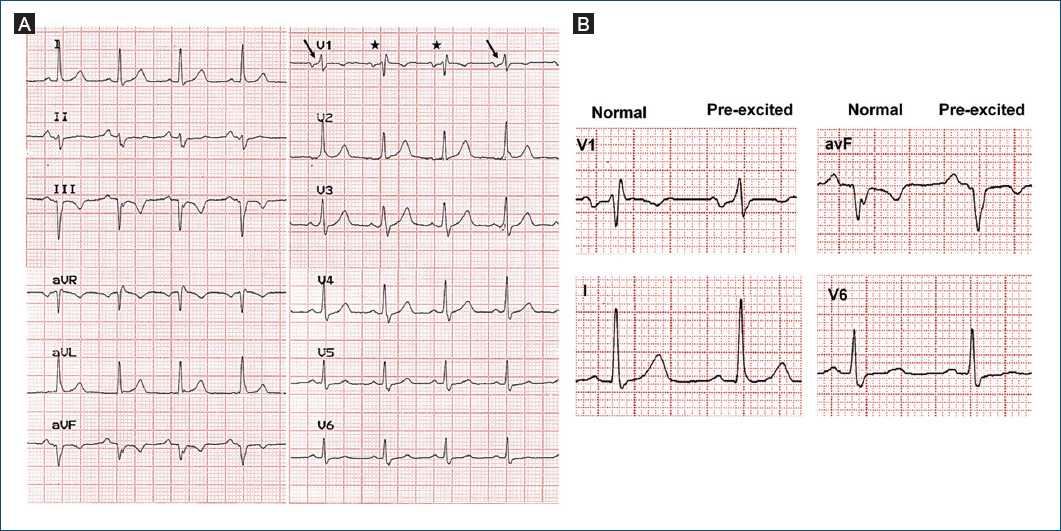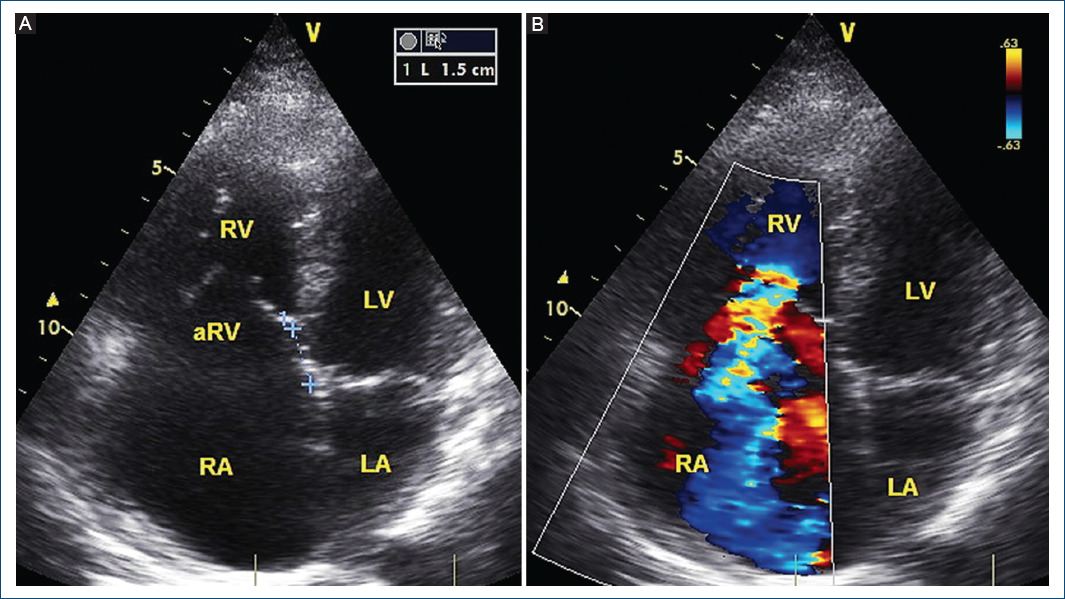Right bundle branch block (RBBB) is a very common electrocardiographic feature in patients with Ebstein anomaly (EA) and it is present in more than 94% of these patients1. We present the case of a 33-year-old woman who was admitted to the emergency room with palpitations, with BP 95/55 mmHg and HR 155 bpm, her heart rhythm was irregular and she had a systolic murmur in the tricuspid focus. In the electrocardiogram (ECG), there was an irregular wide QRS tachycardia, which was negative in leads V1 and DIII, compatible with preexcited AF by a right postero-septal accessory pathway (AP) (Fig. 1). Electrical cardioversion was performed going into sinus rhythm with intermittent RBBB (Fig. 2). The echocardiogram revealed findings consistent with EA with a tricuspid septal leaflet attachment index of 10 mm/m2 (Fig. 3). The patient was discharged with propafenone 150 mg QID pending ablation. In 2006, Iturralde et al. reported that the absence of RBBB in patients with EA is strongly associated with the presence of an AP2, this is explained because anterograde conduction through a right AP during sinus rhythm masked RBBB. In this case, the preexcitation appeared only in some QRS complexes, causing the RBBB to be masked when it was present; therefore, it is not an alternating RBBB itself, but rather an intermittent preexcitation. In these patients, the pre-excitation pattern is not always evident, even in some leads the PR interval may be normal (Fig. 2), so the most notable electrocardiographic characteristic will always be the absence of RBBB.

Figure 1 Preexcited AF the negative QRS polarity in leads V1 and III, and the positive QRS polarity in V2 suggests that the anterograde conduction occurs through a right posteroseptal AP.

Figure 2 A: sinus rhythm with intermittent preexcitation, note that when there is no preexcitation, the RBBB is observed (stars) and when there is antegrade conduction through the AP (accessory pathway), the RBBB is masked (arrows). B: comparison between normal and pre-excited complexes, note that despite the existence of preexcitation the PR interval is normal in some leads.











 text new page (beta)
text new page (beta)



